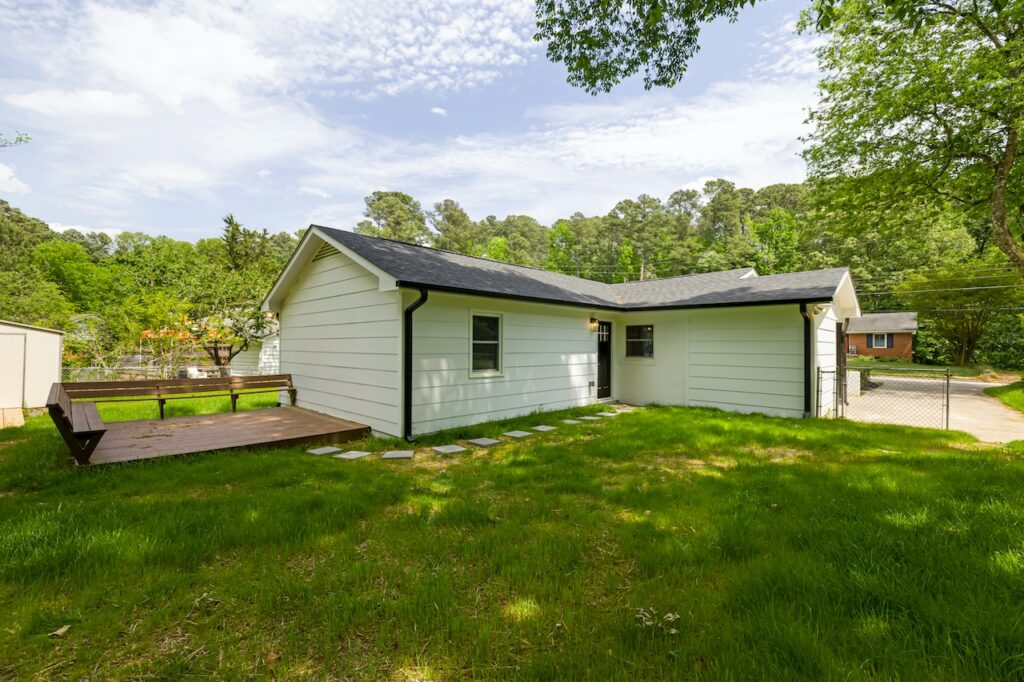A lush, green lawn can transform your yard into a picturesque oasis, providing a welcoming space for outdoor activities and relaxation. However, even the most well-maintained lawns can develop bare patches, disrupting the overall beauty of your landscape. These unsightly spots can result from various factors, such as heavy foot traffic, pet damage, lawn diseases, or poor maintenance practices. Fortunately, with the right knowledge and a bit of effort, you can restore the vibrancy of your lawn and green those gaps in no time. In this article, we will explore effective remedies for dealing with bare patches and reclaiming the full beauty of your yard.

Understanding the Causes of Bare Patches
Before diving into the solutions, it’s essential to understand the underlying causes of bare patches in your lawn. Identifying the root issues will help you address them directly and prevent future occurrences. Some common causes include:
- Heavy Foot Traffic: Frequent walking or playing in the same area can compact the soil, preventing the grass from growing properly.
- Pet Damage: Dog urine contains high nitrogen levels, which can cause yellow or brown spots in the lawn.
- Lawn Diseases: Certain diseases, like brown patch or dollar spot, can cause large, irregular bare patches in the grass.
- Thatch Buildup: A layer of dead grass and organic matter between the grass blades and soil can create a barrier that hinders new growth.
- Poor Drainage: Areas with inadequate drainage can lead to waterlogged soil, suffocating the grass roots and causing bare spots.
- Inadequate Watering: Overwatering or underwatering can stress the grass and create bare patches.
- Soil Compaction: Compacted soil prevents air, water, and nutrients from reaching the grassroots.
Step-by-Step Solutions
Now that we understand the potential causes, let’s explore step-by-step remedies to green those gaps in your yard:
Step 1: Identify the Problem Areas
ake a thorough walk around your yard and identify the specific locations of the bare patches. This assessment will help you tailor your solutions to the specific needs of each area.
Step 2: Rake and Remove Debris
Use a rake to gently remove any dead grass, thatch, or debris from the bare patches. This step will expose the soil and prepare it for reseeding or sodding.
Step 3: Aerate the Soil
For compacted soil, perform aeration using a lawn aerator. Aeration creates small holes in the ground, allowing better airflow, water penetration, and nutrient absorption. This step encourages healthy root growth and supports new grass establishment.
Step 4: Reseed or Sod the Bare Patches
For small bare patches, overseeding with appropriate grass seed is an effective solution. Choose a quality grass seed blend that matches your existing lawn’s grass type. Apply the seed evenly to the bare areas, and lightly rake it in for good seed-to-soil contact. Water the newly seeded areas regularly until the grass establishes itself.
If you have larger bare patches or need an immediate fix, consider laying sod. Sod is pre-grown grass that provides an instant green solution. Ensure the sod pieces fit snugly together, and water generously to help them root into the soil.
Step 5: Water Wisely
Proper watering is crucial for successful grass growth. Water the reseeded or sodded areas deeply and consistently to keep the soil consistently moist. Avoid overwatering, as this can lead to root rot and other problems. Early morning or late evening is the best time to water your lawn to minimize evaporation.
Step 6: Implement Preventive Measures
To prevent future bare patches, take proactive measures to protect your lawn. Consider creating designated paths for foot traffic and play areas to distribute the wear and tear more evenly. Train pets to use specific areas for urination, and promptly dilute urine spots to minimize damage. Regularly aerate your lawn to prevent soil compaction and dethatch if necessary.
Step 7: Maintain Healthy Lawn Practices
Consistent lawn care practices are essential for a vibrant, green lawn. Mow the grass at the appropriate height for your grass type, ensuring you cut no more than one-third of the grass blades at a time. Fertilize your lawn according to the recommended schedule for your grass species and region. Properly maintain your irrigation system to provide adequate water without wasting it.
Step 8: Monitor and Address Issues
Keep a close eye on your lawn’s health and address any issues promptly. Regularly inspect for pests, diseases, or any signs of stress. Identifying and addressing problems early can prevent them from spreading and causing more extensive damage.
Greening the gaps in your yard and restoring the beauty of your lawn may require some time and effort, but the results are well worth it. By understanding the causes of bare patches and implementing the appropriate remedies, you can achieve a lush, vibrant lawn that will be the envy of the neighborhood. Remember, consistent maintenance and preventive measures are key to maintaining a green, healthy lawn year-round. With patience and care, you can transform your yard into a captivating outdoor space for enjoyment and relaxation. So, put on your gardening gloves, grab your tools, and embark on the journey to green those gaps and create the lawn of your dreams.
Comments